The Assikura Women’s League underwent a change in structure, grew into a competition between eight teams, and expanded to a competition of ninety-two matches. This league review attempts to magnify some underlying details that may have been overlooked in the frenzy that ensued throughout the past months across the board.
Form Over A Season
Eight teams took to the league campaign with fresh hopes and aims of where they wanted to be in the table come the end of March. The league changes made for plenty of discussions early on. Five teams were clear in their objectives of a place within the top four ahead of the league split: Birkirkara, Swieqi United, Mgarr United, Hibernians and Valletta.
On the other hand, San Gwann took to the league campaign with a new coach in Julian Camilleri with a first clear aim of improving on their points tally of last season (3 points). Mtarfa stuck to their setup and hoped to better last season’s tally of 6 points. Lija Athletic formed a fresh team, spearheaded by Jethron Azzopardi, with the aim of pushing for a strong debut season and return under the namesake.
Now that the campaign is over, a comparison of the trajectory of teams throughout the season can offer some insight into the peaks and troughs of form. It also perhaps gives a different picture of where teams gained advantages and lost them.
Below is a graph showing the form against each matchday, where the team gains a +1 on the y-axis for a victory, 0 for a draw, and -1 following a defeat. The league split occurred following matchday 14 and is also marked.
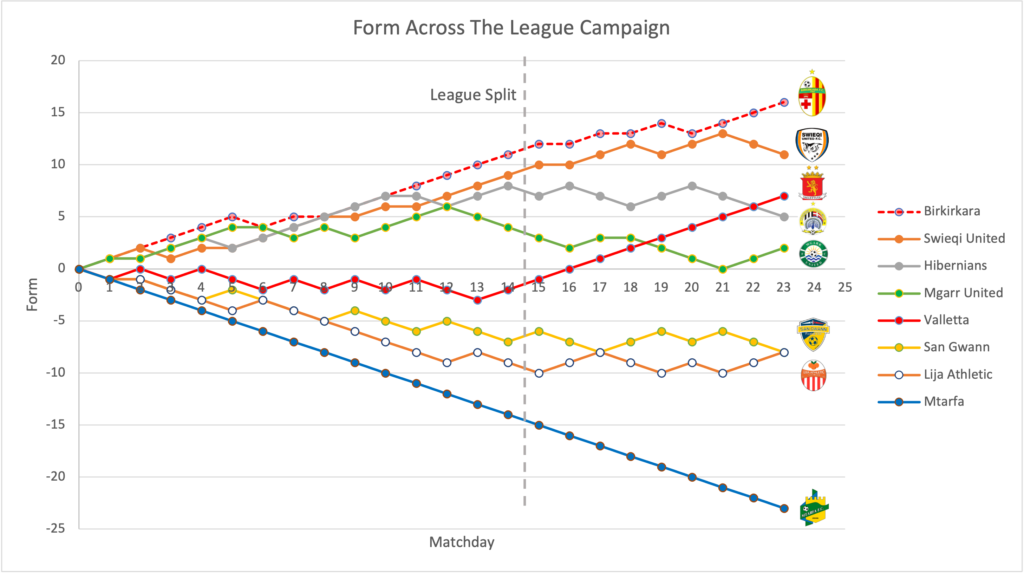
Valletta’s campaign shows a perfect tale of two halves of a season marked by the league split. It is a picture that magnifies the fact that the next hurdle for Valletta is to start getting points against Mgarr United, Hibernians, Swieqi United and Birkirkara. In fact, the team had a topsy-turvy opening half, marked by a zig-zag of results (matchday 1 – 14). They won the matches against San Gwann, Lija Athletic and Mtarfa, but immediately relapsed to defeats against Birkirkara, Swieqi United, Hibernians and Mgarr United. However, the side finished the first phase with a victory against San Gwann (MD14) and did not look back from then on, going on an unbeaten run that sent their campaign into a positive trajectory until the end.
Mtarfa’s curve paints a picture of unwanted consistency, that of the disappointment of string of defeats that persisted throughout the season. The team was unable to build on last season’s campaign, leapfrogged by the development that other teams made. Despite displaying clearly improved performances later on in the season, the change perhaps came too late in the day. By that point, perhaps the other teams had solidified their understanding between players and coaches to take their own performances even further forward.
Lija Athletic and San Gwann’s battle was one of the most immersing ones and their intertwined form displayed above is a reflection of this. San Gwann started the strongest of the two, despite losing out the matches against the top five of Birkirkara, Swieqi United, Hibernians, Mgarr United and Valletta, the team earned convincing victories against Mtarfa against whom they struggled last year and edged out Lija Athletic early on in the campaign. However, the Yellows were unable to shake off the threat from Lija Athletic and appeared to lose steam towards the end, ultimately unable to set themselves apart.
On the other hand, Lija Athletic were perhaps dismissed by many following a debuting 11-0 defeat at the hands of the defending champions Birkirkara. The side had a tough run of form early on until MD12, but built steadily throughout the league campaign. They managed to maintain a positive streak against Mtarfa and built enough understanding to take the battle to San Gwann until the end of the season, ultimately equalling their points tally. Perhaps the side exceeded on their own expectations, but that can only be a good thing. It was a team that thrived under the pressure of direct confrontations, as will be highlighted further below. The real question lies into what they intend to do next.
Hibernians started the season brightly and peaked in consistency across matchday 5 to 10. However, there was a swinging momentum following that. The team continued to earn the points they were expected to, but were unable to get the consistency needed to take themselves back to the top of the table once it was relinquished. Still the side’s campaign builds on that of last year’s, taking third instead of fourth place, while crucially holding their own and managing to earn points against all of the teams in the league.
Mgarr United had a solid start, earning some points against the top four rivals and despite not clinching victories against them, they stayed close to the title race early on. However, their hopes of a title challenge were undone by a poor run of form between MD13 and MD16. Despite notching points against Swieqi United and Birkirkara in MD17 and 18, the side were dealt another defeat by Hibernians, following which another downward trajectory followed. The Greens redeemed points in the final two matches to close the gap, but had already paid the price by then.
While the Paolites and the Greens appeared to be hitting their stride early on, tension was likely to be mounting at Swieqi United as they were dealt an early defeat by Hibernians, following which they were held to a draw by Mgarr United. However, the Owls injected positivity back into their campaign by earning four points out of six in their first two encounters against Birkirkara. They continued the positive trend to overcome both Mgarr United and Hibernians by MD15. The league split resulted in changing results. Although they closed the gap to Birkirkara again in MD18 and MD21, defeats against Stripes in the final stages, combined with the early slips against Hibernians and Mgarr United, condemned Swieqi United to second place once more.
That leaves only the trajectory of the resulting champions Birkirkara. On the one hand, one can say that the Stripes were not as consistent this year and that is in part true. On the other hand, the league split, together with investment put in by various clubs, made for a tougher battle this time round. The difference lay in the response to the elating and tough moments in the campaign.
Birkirkara’s curve shows dips, but they were sporadic and crucially there was always an immediate return to points. Five wins gave way to a defeat at the hands of Swieqi United. However, the response following that match was what one came to expect of the side, that of taking the defeat and responding by grinding out points, mostly three, while at times settling for just the one. They responded to the early blips with a string of maximum points from MD8 to MD15. Following that they had already set themselves apart in first place. Although stumbling against all three rivals in the top four following the split, the side had enough character and stamina to maintain the same hunger for the title until the end and back it up with enough positive performances to defend the title once more.
Get The First Goal
It will not surprise those following the league that 78 matches were won by the team who scored the first goal. That was the story of 85% of the matches played. While perhaps one should applaud the defensive resilience, most often such matches resulted in heavily one-sided scorelines. Based on this, it is a statistic that points toward a crucial area for improvement across the board: the ability to get back into a match.
There were three matches where the team trailing equalised, but the side with the early lead pushed through for the win despite this. Lija Athletic were the team that earned a total of six points with such instances, making up two of these three matches. They lost an early lead against Mtarfa and San Gwann, but managed to restore the lead to secure 3-1 victories in both matches. Swieqi United were the other team to manage this in their final outing against Hibernians. Despite the Paolites cancelling Swieqi United’s early 1-0 lead, the Owls went on to win the match by 6-2.
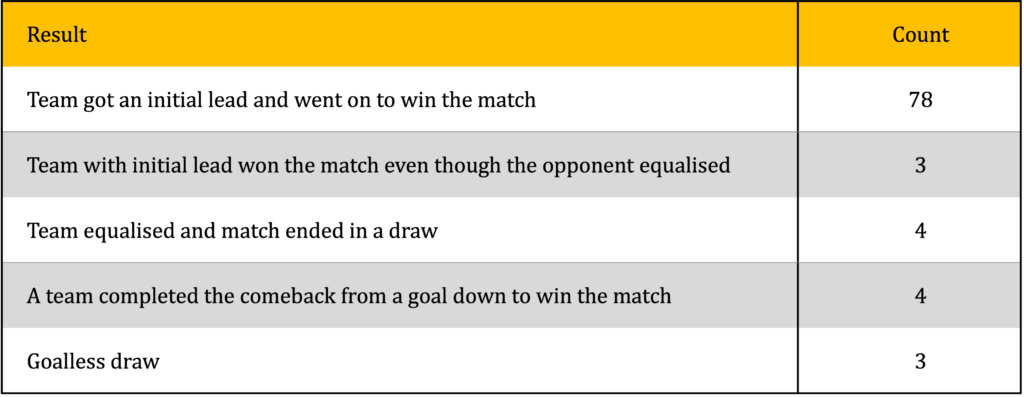
On the other hand, Swieqi United were the only team to partake in the three goalless draws across the entire campaign. These were played against their three direct rivals in the top four: Mgarr United, Birkirkara and Hibernians. All of these draws occurred in the first phase, prior to the split.
There were four matches where the team trailing secured an equaliser and held on to earn a point. Lija Athletic earned a point against their direct rivals San Gwann in this way. Birkirkara managed this on two occasions. They equalised against Mgarr United and Swieqi United, thus securing two points on the board, while denying their rivals three points, in their search to defend the title.
Mgarr United were the only other team that managed to secure a point after trailing, which they did in their first encounter against Hibernians. In fact, the Greens cancelled the Paolites’ lead twice in the match to ensure they don’t go home empty handed. That match was particular in making Mgarr United the only team to manage to earn points after trailing by more than one goal. No team managed to secure a win after falling behind by to a two-goal margin.
Four matches ended in completed comebacks, which were achieved by just two sides in the competition: Valletta and Mgarr United. In both cases, the teams reversed a loss into a win after trailing by one goal. Valletta secured a total of six points by reversing an initially conceded goal against Lija Athletic (won 3-1) and against San Gwann (won 2-1). However, they could not retain their lead against Mgarr United, who reversed the score to win the encounter by 4-1. The Greens then managed another comeback against Swieqi United. They reversed an initially conceded goal into a 3-1 lead. The Owls got a late goal back to take the score to 3-2, but could not find another goal to secure the point.
What About The Underlying Factors?
It may be crude to look at results in a vacuum. While looking at matches through the season, this review does not delve into the qualitative details that shackled and boosted the teams during this time. Players signed over the summer and in January had to be integrated, teams were also hampered by injuries and experienced changes in coaching staff. Beyond the remit of teams, were also the differences in pitches and assigned match officials.
All these are relevant points for analysis, which may or may not change the fortunes of a team, also depending on how well equipped it is to deal with them by the club backing it. However, the women’s football season in Malta is not yet done. There is still one trophy to be won, the Assikura Women’s Knockout. The quarter-finals will be played on the 12th and 13th of April, just after the international break. Conclusions on the above-mentioned points may be only made once the Assikura Women’s Knockout is lifted on the 27th of April.
Stay up to date by following The Sporting Fan on social media: Instagram ~ Facebook ~ X
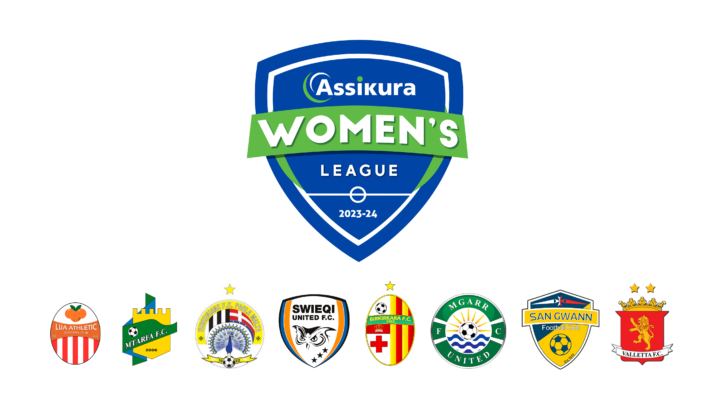
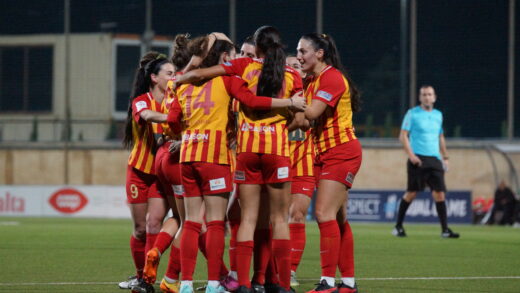
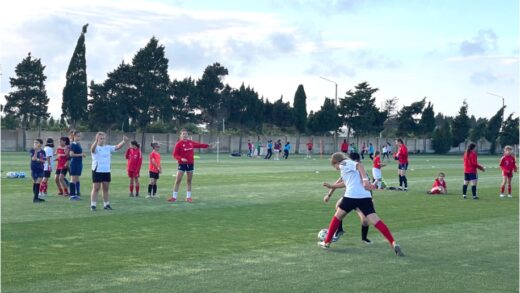
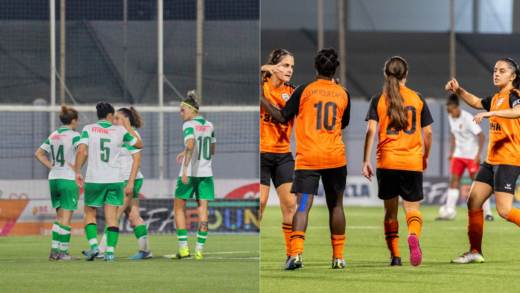
1 Response
[…] already dove deep into the league results and their meaning for each respective team, the focus here is on the holistic season. The change in the league format brought with it many […]